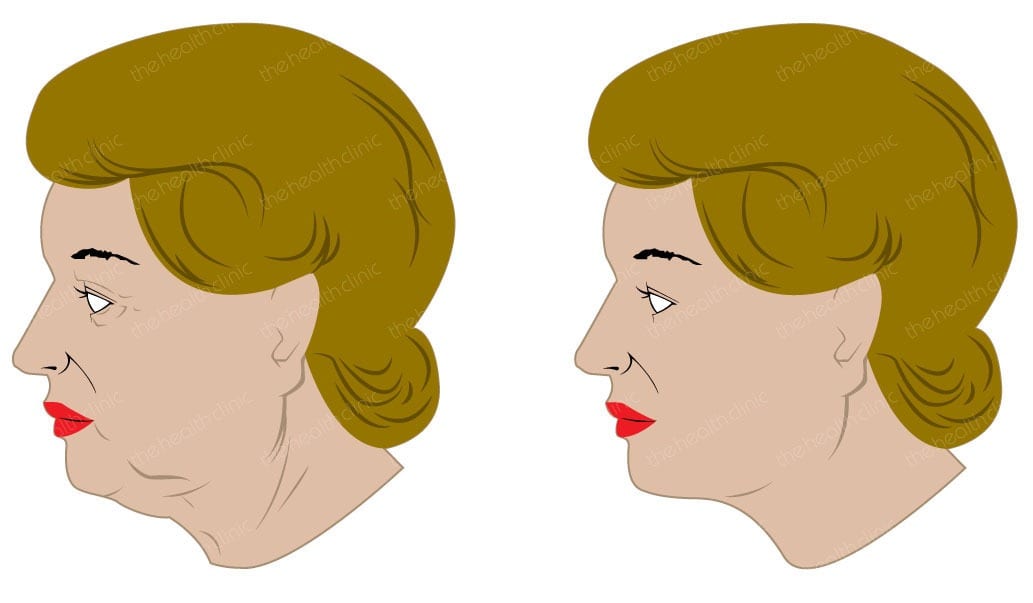Facelift
- Home
- Plastic Surgery
- Facelift
A facelift, or rhytidectomy, is a surgical procedure used to reduce facial wrinkles, eliminate telltale signs of aging, and improve the overall appearance of the face and jaw area. Facelift surgery can help reverse the harmful effects of time, stress, and the elements.
| Surgeon | Dr. Siim Simmo |
| Anesthesia | General |
| Surgery duration | 4-7 hours |
| Nights at hospital | 2-3 |
| Sick-leave | 1-2 weeks |
| Price | Mini-facelift – from €4590 Neck Lift – from €2590 Face & Neck Lift – from 6990€ Additionally lipofilling – 990€ Eyebrow lift – from 2590€ |
| Medical loan | starting from €70 per month. Apply here. |
Ask for more information or book a time |
The face often shows some of the most visible signs of aging. And though these changes appear gradually, they can impact the way you feel about yourself. If your reflection in the mirror is starting to look older than you feel, a facelift (rhyditectomy) may help you look younger and more refreshed.
Are you a candidate for a facelift?
 Rhytidectomy can be an effective way to improve appearance and boost self-confidence, but it is not for everyone. Patients whose skin is still relatively supple, and who are in good overall health, achieve the best results.
Rhytidectomy can be an effective way to improve appearance and boost self-confidence, but it is not for everyone. Patients whose skin is still relatively supple, and who are in good overall health, achieve the best results.
Most commonly performed on patients in the 40-60 age range, facelifts can also produce great results for people in their 60s, 70s and 80s. Good candidates for a facelift include healthy men and women with any of the following conditions:
• Sagging skin and deep wrinkles in the cheeks and cheekbone area
• Redundant skin, wrinkles, or excess fatty tissue in the neck
• Loss of jawline definition
• Deep nasolabial folds – the lines that runs from the corners of the nose to the
corners of the mouth
Though facelift surgery offers great benefits for many, it should to be approached with extra caution for those with any of the following medical conditions:
• High blood pressure
• Blood-clotting issues
• Problems healing causing excessive scarring
If you have any of these medical conditions, be sure to alert your doctor during consultation.
What does a facelift entail?
There are many variations to the facelift procedure. Your doctor will discuss your options with you during your pre-op consultation. Typically, the incision is hidden in the natural contour of your ear, and extended around the earlobe and into the hairline for easy concealment. A small incision hidden beneath your chin may also be needed.
Using these facial incisions, the doctor will separate the facial skin from the underlying tissues, pulling it back. He will then remove any excess skin and may reposition deeper tissues if needed to improve your facial contour. If necessary, an incision may be made beneath the chin to remove fatty tissue in that area and decrease the appearance of muscle bands in the neck.
How to prepare for this surgery?
It is important to follow your doctors instructions when preparing for facelift surgery to ensure the best possible results. Those instructions may include:
• Refraining from smoking for 3-4 months before and several weeks after surgery
• Avoiding certain medications, like aspirin or any other anti-inflammatory
• Growing your hair to cover your incisions as they heal
What to expect during recovery?
Directly after surgery, you’ll be taken to a recovery area. A bandage may be used around your face to control swelling, and small drainage tubes may be placed beneath the skin to prevent the accumulation of fluids. Though post-surgical discomfort is typically minimal, your pain can be controlled with medication. Though everyone heals at a different pace, you can expect your recovery to roughly follow this general time line:
The day of facelift surgery
• You can expect to experience some bruising and swelling which can be reduced by keeping your head elevated.
The first week
• Bandages will be removed
• Bathing and showering will be permitted
• Stitches will be removed or dissolve
• Applying makeup to hide bruising and discoloration
• Swelling will reach its peak, then begin to subside
• Light activity will be permitted
• Sleeping with elevated head will continue to aid in the reduction of swelling
Within two weeks
• Most bruising will subside
• Normal activities and non-strenuous work will be permitted
After several weeks
• Swelling will continue to subside
• Numbness will diminish greatly; though some may persist for several months
• Exercise may be resumed
Direct sunlight should be avoided throughout the entire healing process. Sunblock should be used long-term to protect your skin.
Results
Most people who undergo facelift surgery are very pleased with their results. The healing, however, will take some time, so you may not see the final results of your surgery for several months.
How long your facelift results will last depends upon a number of factors, including your genetics and the lifestyle you lead. Though a facelift cannot stop the aging process, patients are typically very happy with their facial appearance for many years following their procedure. Additional improvements, such as a neck lift or brow lift, can be performed at a later time to maintain a more youthful look.
Gallery with before / after pictures
Facelift surgery is performed by dr. Siim Simmo, who is a highly experienced plastic surgeon in Estonia. Ask for more information or book a time.
